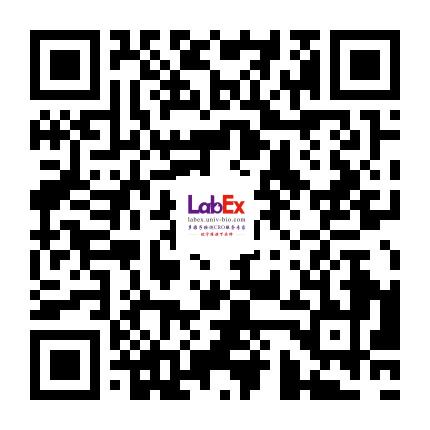A LILRB1 variant with a decreased ability to phosphorylate SHP-1 leads to autoimmune diseases
Inborn errors of immunity are known to cause not only immunodeficiencies and allergies but also autoimmunity. Leukocyte immunoglobulin-like receptor B1 (LILRB1) is a receptor on leukocytes playing a role in regulating immune responses. No phenotypes have been reported to be caused by germline mutations in LILRB1. We aimed to identify the causative variant in a three-generation family with nine members suffering from one of the three autoimmune diseases-Graves' disease, Hashimoto's thyroiditis, or systemic lupus erythematosus. Whole-genome linkage study revealed a locus on chromosome 19q13.4 with the maximum LOD score of 2.71. Whole-exome sequencing identified a heterozygous missense variant, c.479G > A (p. G160E) in LILRB1, located within the chromosomal-linked region, in all nine affected members. The variant has never been previously reported. Jurkat cells transfected with the mutant LILRB1, compared with those with the wild-type LILRB1, showed decreased phosphorylation of both LILRB1 and its downstream protein, SHP-1. Flow cytometry was used to study immunophenotype and revealed that LILRB1 was significantly lower on the surface of activated regulatory T lymphocytes (Treg) cells of patients. Single-cell RNA sequencing showed substantially increased M1-like monocytes in peripheral blood mononuclear cells of affected individuals. This study, for the first time, implicates LILRB1 as a new disease gene for autoimmunity.- Sci Rep
- 4.6
- 2022 Sep 14;12(1):15420.
- Human
- 抗体芯片
- 免疫/内分泌
- 免疫/内分泌
- 单核细胞
- 自身免疫性疾病
- 2B4/SLAMF4,FcRH1/IRTA5,NKp46/NCR1,BLAME/SLAMF8,FcRH2/IRTA4,NKp80/KLRF1,BTLA,FcRH4/IRTA1,NTB-A/SLAMF6,CD3 epsilon,FcRH5/IRTA2,PD-1,CD5,ILT2/CD85j,PECAM/CD31),CD6,ILT3/CD85k,SHIP-1,CD28,ILT4/CD85d,SHP-1,CD84/SLAMF5,ILT5/CD85a,SHP-2,CD229/SLAMF3,ILT6/CD85e,Siglec-2/CD22,CEACAM-1,Integrin beta 3/CD61,Siglec-3/CD33,CLEC-1,KIR2DL4,Siglec-5,CLEC-2,LAIR-1,Siglec-7,CRACC/SLAMF7,LAIR-2,Siglec-9,CTLA-4/CD152,LMIR1/CD300A,Siglec-10,DCIR/CLEC4A,LMIR2/CD300C,SIRP-beta 1,Dectin-1/CLEC7A,LMIR3/CD300LF,SLAM/CD150,DNAM-1,LMIR6/CD300LE,TREM-1,Fc epsilon RII/CD23,MDL-1/CLEC5A,TREM-2,Fc gamma RIIA,NKp30/NCR3,TREML1/TLT-1,Fc gamma RIIIA/B,NKp44/NCR2
相关货号
LXAH059-1
Abstract
Inborn errors of immunity are known to cause not only immunodeficiencies and allergies but also autoimmunity. Leukocyte immunoglobulin-like receptor B1 (LILRB1) is a receptor on leukocytes playing a role in regulating immune responses. No phenotypes have been reported to be caused by germline mutations in LILRB1. We aimed to identify the causative variant in a three-generation family with nine members suffering from one of the three autoimmune diseases-Graves' disease, Hashimoto's thyroiditis, or systemic lupus erythematosus. Whole-genome linkage study revealed a locus on chromosome 19q13.4 with the maximum LOD score of 2.71. Whole-exome sequencing identified a heterozygous missense variant, c.479G > A (p. G160E) in LILRB1, located within the chromosomal-linked region, in all nine affected members. The variant has never been previously reported. Jurkat cells transfected with the mutant LILRB1, compared with those with the wild-type LILRB1, showed decreased phosphorylation of both LILRB1 and its downstream protein, SHP-1. Flow cytometry was used to study immunophenotype and revealed that LILRB1 was significantly lower on the surface of activated regulatory T lymphocytes (Treg) cells of patients. Single-cell RNA sequencing showed substantially increased M1-like monocytes in peripheral blood mononuclear cells of affected individuals. This study, for the first time, implicates LILRB1 as a new disease gene for autoimmunity.
金课堂之文献解析 文献原文请点击
本网站销售的所有产品及服务均不得用于人类或动物之临床诊断或治疗,仅可用于工业或者科研等非医疗目的。







 沪公网安备31011502400759号
沪公网安备31011502400759号
 营业执照(三证合一)
营业执照(三证合一)


